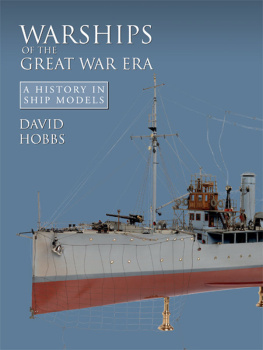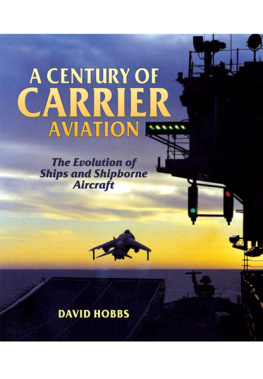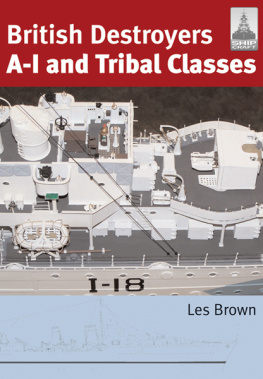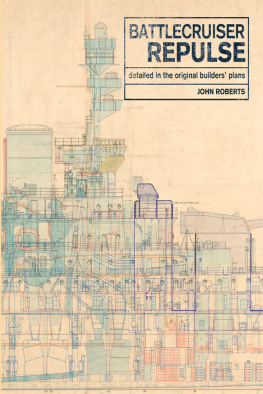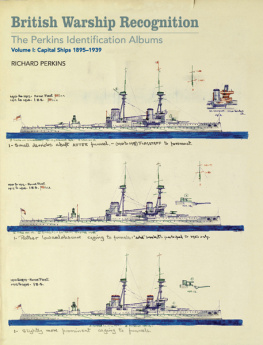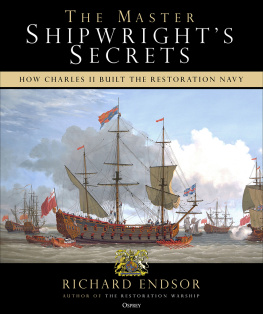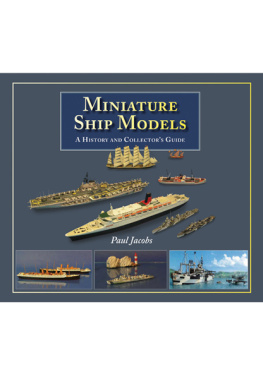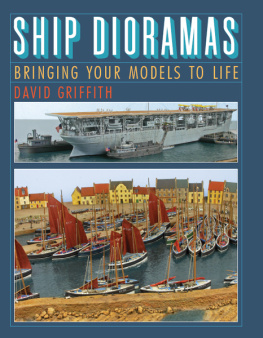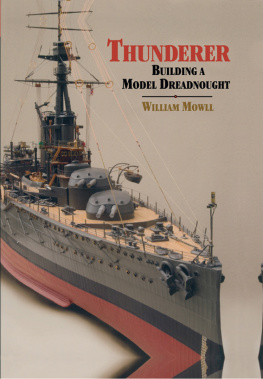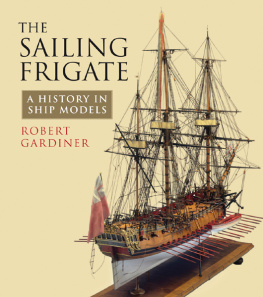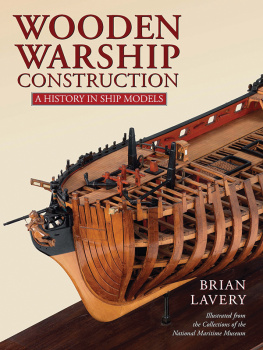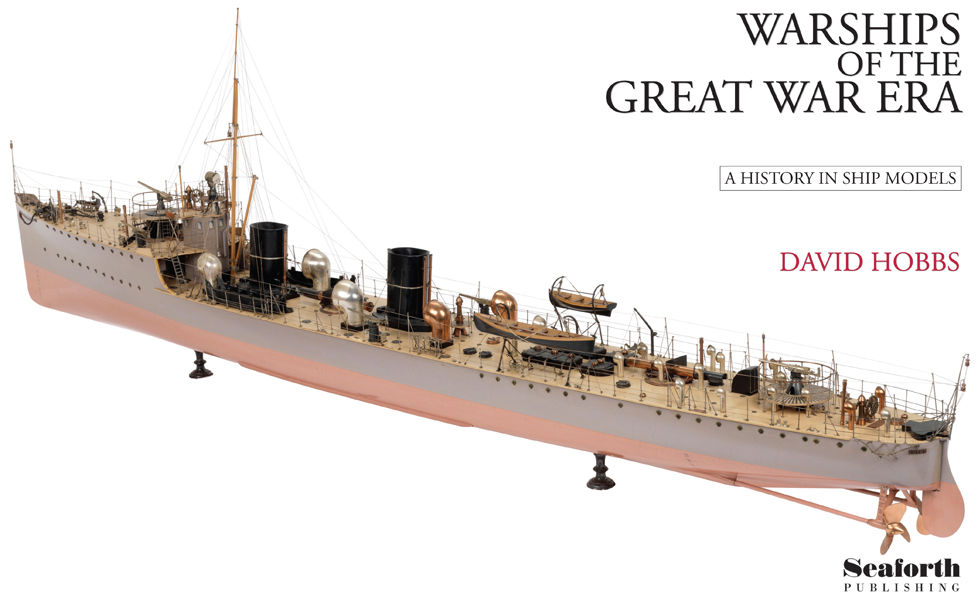
SLR0114
The River class destroyer Boyne . The development of the destroyer a shortened form of torpedo-boat destroyer was essentially a British initiative.
Acknowledgements
We would like to thank the staff of the National Maritime Museums Picture Library, and especially Emma Lefley, who faultlessly organised the complicated issues surrounding the large photo orders. For curatorial help, we are grateful to Simon Stephens.
Other models came from the collection of the Imperial War Museum, the Australian War Memorial and the Australian National Maritime Museum, where Penelope Hyde was particularly helpful.
Individuals who supplied photographs or gave permission to use illustrations of their models deserve particular notice: these are Jim Baumann, John R Haynes, Ian Johnston and Rob Kernaghan. Ian Johnston and John Roberts also kindly helped with the identification of some of the ships fittings.
References
Models in the National Maritime Museum collection are catalogued by SLR number, and in this book these are quoted at the beginning of each caption to one of these models. Further details of these models can be found on the Museums Collections website at:
http://collections.rmg.co.uk/collections.html#!csearch;collectionReference=subject-90254;authority=subject-90254
Searching by SLR number will turn up a full description of the model and any available photographs.
Copyright David Hobbs 2014
First published in Great Britain in 2014 by
Seaforth Publishing
An imprint of Pen & Sword Books Ltd
47 Church Street, Barnsley
S Yorkshire S70 2AS
www.seaforthpublishing.com
Email info@seaforthpublishing.com
British Library Cataloguing in Publication Data
A CIP data record for this book is available from the British Library
ISBN 978 1 84832 212 7
eISBN 9781848323032
All rights reserved. No part of this publication may be reproduced or transmitted in any form or by any means, electronic or mechanical, including photocopying, recording, or any information storage and retrieval system, without prior permission in writing of both the copyright owner and the above publisher.
The right of David Hobbs to be identified as the author of this work has been asserted in accordance with the Copyright, Designs and Patents Act 1988
Contents
:
:
:
:
:
:
:
:
: Introduction
T he Royal Navy that mobilised for war in 1914 had just undergone the biggest and most sustained period of technological change in its long history, but its purpose remained unaltered to secure the use of the worlds oceans for British and Allied operations and trade, and to deny their use to the enemy. To achieve this end the Royal Navy commissioned literally thousands of ships ranging in size and capability from the worlds most powerful battleship, Queen Elizabeth , to high-speed coastal motor boats, and took up large numbers of vessels from trade. In order to fully understand the war at sea, a knowledge of the ships themselves is vital. Their capabilities, limitations and ability to send, receive or make full use of communications were the biggest influence on their actual, rather than intended, use by commanders of flotillas, squadrons and fleets. The National Maritime Museum at Greenwich has a collection of ship models that includes many depicting ships from the First World War and these provide a unique way of studying the construction, armament, deck fittings and appearance of the actual ships that they portray. The full-hull models allow the underwater features propeller shafts, rudder and machinery inlets to be studied and every model gives the observer the chance to examine the whole ship in perspective: to choose a vantage point and study detail in a way that is not possible with a photograph or technical drawing. Now that almost all of these ships no longer exist, models give the only means of three-dimensional inspection available to us. Large and impressive as the National Maritime Museums collection is, it does have a few gaps, however, especially with regard to submarines, and these have been filled by illustrations from the collections of the Australian National Maritime Museum in Sydney and the Imperial War Museum in London, along with a few top-quality examples by contemporary modellers. Whilst this book focuses on ships operated by the Royal Navy, the opportunity has been taken to include, for comparison, models in the Greenwich collection that depict both warships built in the United Kingdom for foreign navies and the ships of the opposing German Navy.
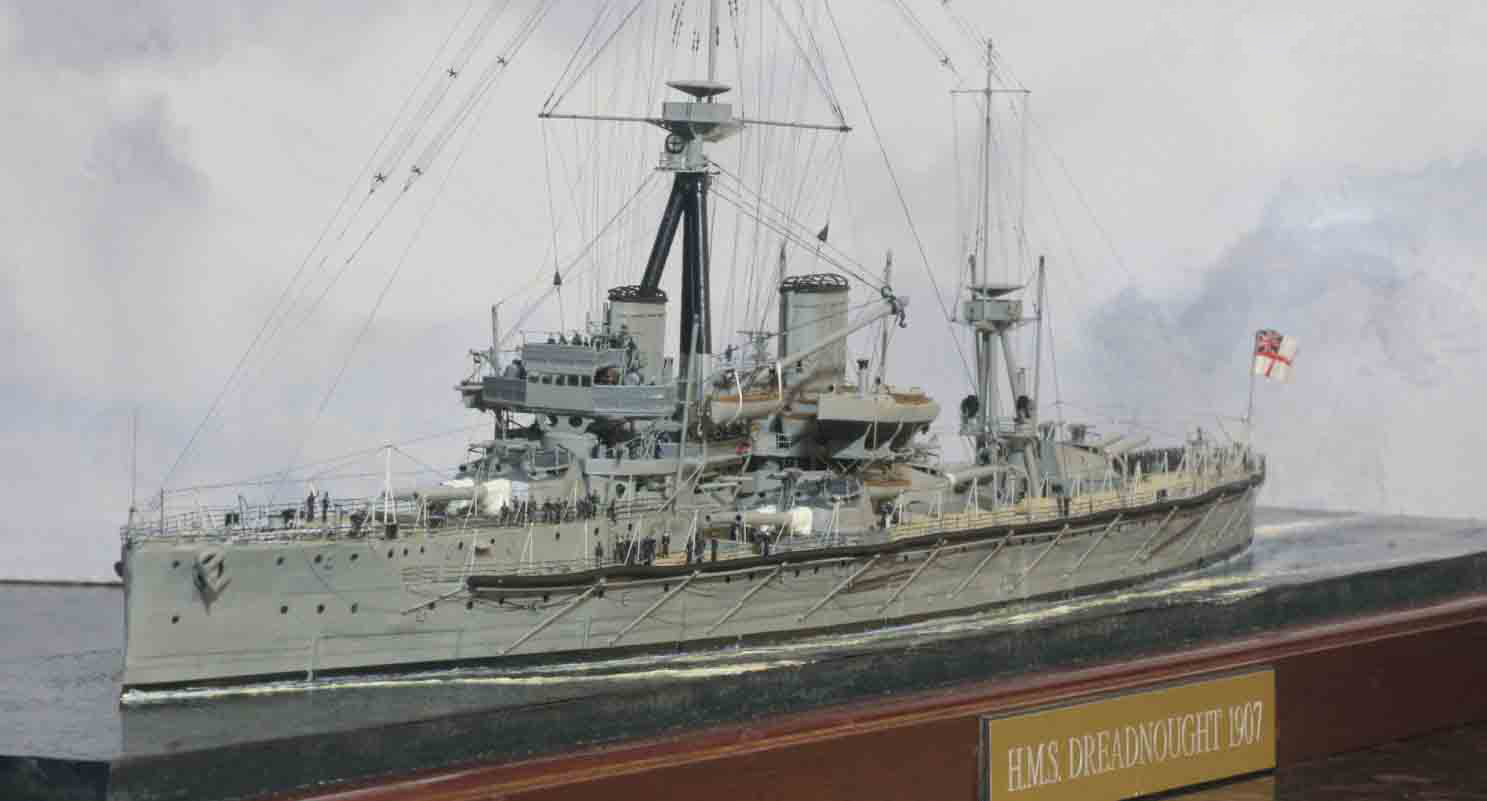
HMS Dreadnought , the battleship that gave its name to a naval revolution, in a finely detailed model by Jim Baumann.
In 1914 no British Admiral had ever commanded a cohesive naval force the size of the Grand Fleet or tried to control its movements from a single bridge. Some of the problems had solutions which were known and understood but they had not been practised sufficiently and their implementation in actual operations left a great deal to be desired. Wireless gave the Admiralty the opportunity to direct operations at sea but the responsibilities and requirements of such intervention were not fully comprehended until late in the war. Aviation demonstrated increasing importance as the war progressed and developed from the attempted strike on a Zeppelin base by seaplanes from converted merchant ships on Christmas Day 1914 to the planned air strike with torpedoes on the German fleet in its harbours by aircraft from the worlds first carrier by the time of the Armistice in 1918. Other new weapons, including torpedoes, mines, submarines, torpedo-boat destroyers, airships, aircraft and the attendant vessels to maintain and operate them, had to be understood and used to best advantage and their models in the following pages illustrate them in a novel and fascinating way. Even the more familiar weapons such as guns had undergone radical development with greatly increased shell weights, longer ranges and centralised fire-control systems that made accurate long-range fire possible. The need for a damage control organisation to keep ships afloat and in action was understood but insufficient priority had been given to its study in peacetime and in consequence there was not enough training for sailors and their officers. Turbine machinery made unprecedented speeds possible during action and necessitated split-second decisions instead of the hours often available during a sailing battle. Amidst all this new technology, however, manoeuvring instructions by the commander-in-chief were still ordered by flag signals with which the sailors of Nelsons navy would have been quite familiar. The amount of sea covered by the Grand Fleet and the reduced visibility caused by funnel smoke from coal-burning ships and North Sea mist meant that remote ships did not always see flag hoists immediately despite keeping telescopes trained on the flagship. Ships downwind or upwind of the flag hoist could not see them when they were end-on. Signals were always repeated along the line but the time taken for the last ship to acknowledge was often prodigious. Semaphore could be used to signal ships in close company but was of little value communicating with ships at any distance and none at all in the smoke and confusion of a battle.
Throughout the First World War, battleships remained the final arbiters of sea power but the day-to-day work of patrolling the seas and making use of them for the British and Allied cause was undertaken by a range of smaller, specialised ships. Among them were the cruisers, destroyers, submarines, patrol vessels, minelayers, minesweepers, gunboats and auxiliaries described in the following pages. In each case I have provided a description of the model itself together with a description of the real ship it portrays and its historical significance. In each chapter I have spoken briefly about the development of the various types of ship so that the models can be set in their due place and their armament, rig and machinery can add to an understanding of sea warfare between 1914 and 1918. As well as the photographs of the full models, a number of detailed images of specific items of armament or design have been included to give a better understanding of their significance. The further I got into examining these outstanding models, the more fascinating I found the subject. They really do give clarity and a unique understanding of a number of ships that played such an important part in the British Empires war effort a century ago.
Next page
